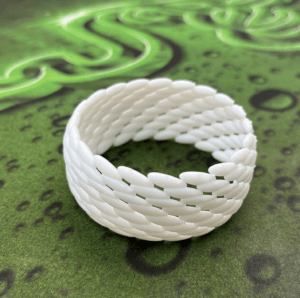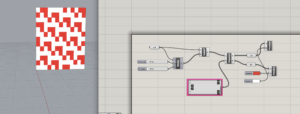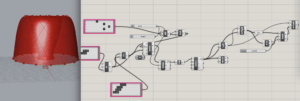
After coming about two weeks late to the class, I was presented with a chance for a project that reflected something about me. It didn’t take long for me to land of a specific topic
The Task
The mission was to gather data about some facet of my life to then be able to visualize in a three-dimensional object. I landed on my hair. More specifically, how it looked. I shower every morning and had noticed that it looks and feels different depending on how I wash it. I wanted to get to the bottom of how to make it look its best, so the decision was easy.
Data Collection


The first question I asked myself was what data I was going to collect that could be useful. I don’t have any scientific equipment to work with so I decided on 4 qualitative metrics: hair volume, frizziness, itchiness (on my scalp), and scent. These would each be measured on a scale from one to ten, with ten being the most of that category.
Over the next two weeks I monitored my washing procedure during my two showers a day (one in the morning and one at night). I realized quickly that I did one of four things each time: washed with shampoo and conditioner, washed with just shampoo, rinsed with just water, or nothing at all. I didn’t follow any particular pattern, which in hindsight would’ve been a good idea. However, I cleaned my hair based on how I had felt the previous day, and I was still able to get a comprehensive list of qualitative data.
Predictions
The results are more or less what I had expected. I went into the project with a vague sense of what was better for my hair based on things various people had told me, and I had also made some superficial observations myself over time.
I initially believed that my hair would look best without washing at all since this allows the natural hair oils to vitalize my hair and scalp without any disturbance.
I use conditioner on and off at times because I’m never really sure if I see any benefit to using it. When it came to predicting what results it would give, these were the ones I honestly looked the most forward to.
Concerning the other two washing methods, I assumed they would be lower down in terms of favorability. For the majority of my life I shampoo’d my hair just about every day until a couple of my friends told me I was destroying my hair. I’m not sure if I noticed any remarkable difference when I switched tactics, so this project gave me a golden opportunity to visualize exactly what it was that was changing and to what extent.
Results
The results turned out largely as expected. My hair looked its best when left on its own for about a day. However, more than a day and my head would start to get itchy. It didn’t exactly smell great after a few days either, which makes sense.
Using shampoo and conditioner came in close second. While volume on average was lower than days where I did nothing to my hair, the level of frizziness was the lowest. In addition, my hair smelled best on those days.
Washing with only shampoo turned out to be the most favorable in terms of itchiness, as it scored lowest out of the four methods. I think I can attribute this to the fact that conditioner can causes dry skin on your scalp, and the removal of it from the process made it a non factor in terms of itchiness
Using just water to rinse my hair gave me the most average data out of all of the methods, with no metric standing out in particular.
Overall, the best methods to use were using shampoo with conditioner or doing nothing at all to my hair. They generated similar results, with the former being less voluminous but feeling healthier and the latter looking the best in terms of volume while sacrificing in terms of frizz and scent compared to the former.
The Hairbrush
The object that I chose to display my data in the end was a hairbrush. The “bristles” would show the four metrics, while the stalks they stood on would determine with washing method I used.

When it came to modeling the actual object, I took heavy inspiration from the toothbrush tutorial that we looked at in our class. The initial shape is similar: a tool you hold in your hand. As such, the handle was more or less the same but bigger. The part that was a little more challenging was the brush part of the hairbrush.

I had some issues when printing the object. The first iteration came out almost perfect with the only real issue being how small it was. The biggest issues came when I wanted to print the larger version. I wanted it to be smooth and comfortable in the hand, so I went for a low nozzle height. I failed maybe 4 times before the plastic didn’t tear itself apart. Even then, the bottom of the handle still came out a little frayed.
I painted each metric to correspond to a color and the end product looked pretty funky but also fun.

Conclusion
I thoroughly enjoyed this project and it game a chance to express myself in an unconventional way, and it gave me the chance to visualize an issue that I have been trying to solve. For future projects, I think the newfound knowledge in the fine-tuning and troubleshooting of the 3D printers will probably come in handy the most so that the next thing I make is a step forward in terms of my ability.


















